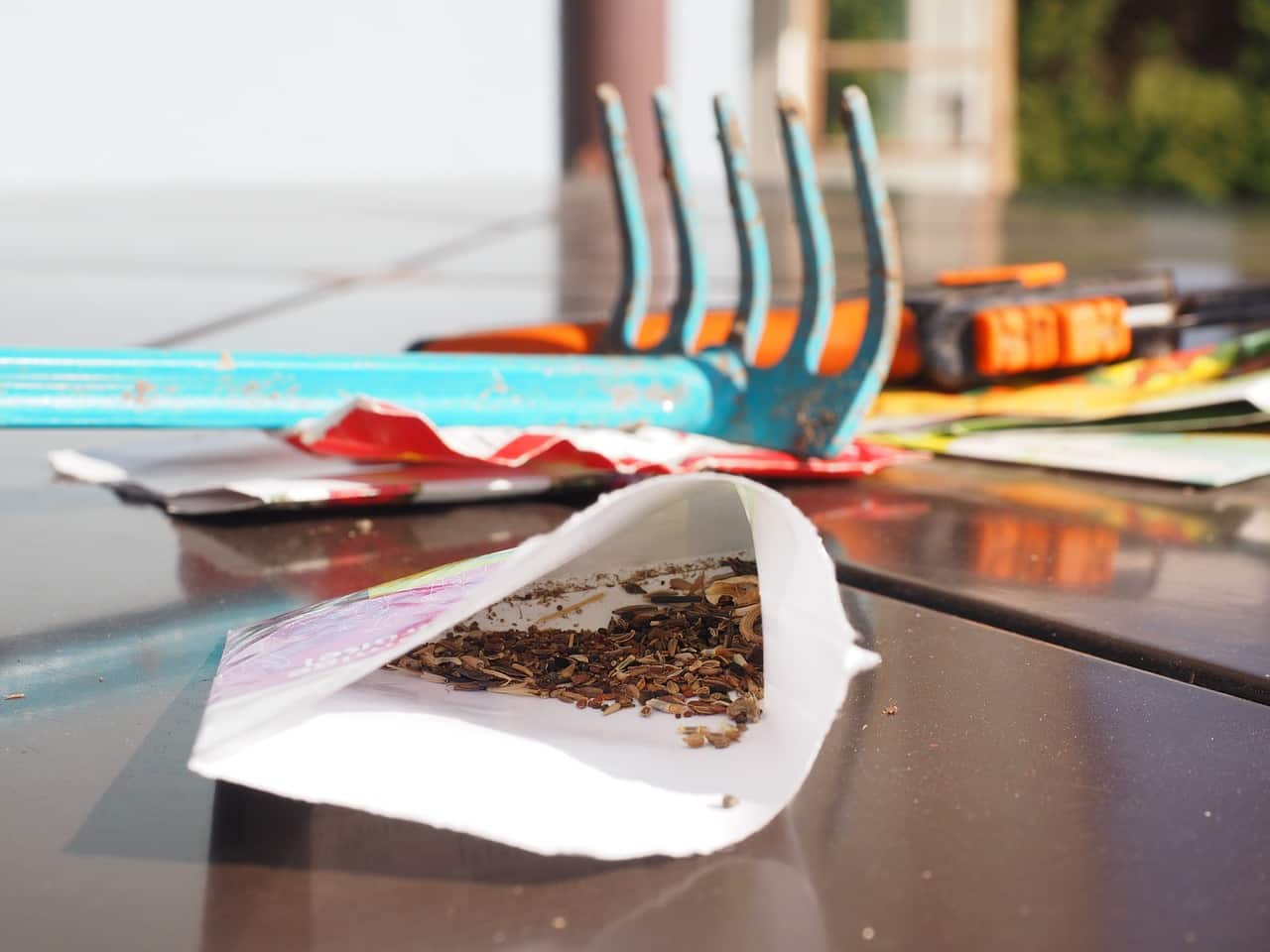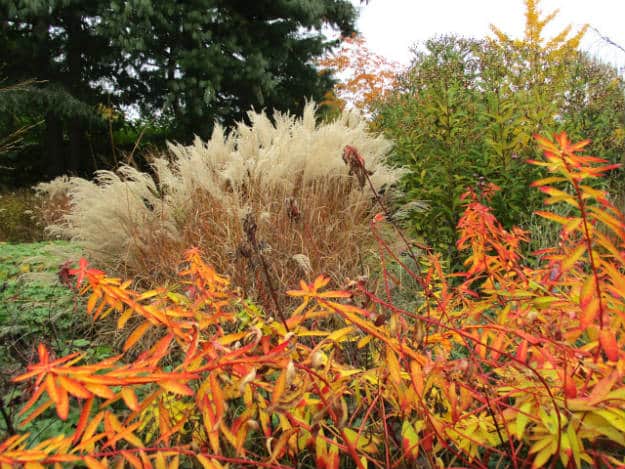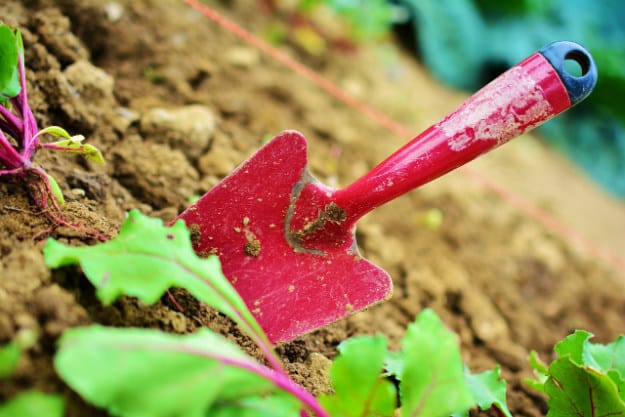Fall gardening tips should come handy with the fall season just around the corner. If you want fresh vegetables till winter, to start growing crops earlier in spring, and produce an ample harvest both seasons, better check these fall gardening tips and you might pick up one or two beneficial to you!
Fall Gardening Tips For Great Success In Spring
It's a common notion to turn in for the autumn season and wait till spring for gardening. I, for one, dream of melting snow, longer days and my sprouting plants even after the fall harvest. However, most homesteaders see the fall season as an opportunity. The weather is cool and fine most days–perfect for me to putter in the garden well into noon. Find out why and how you should take advantage of the fall season. Following these fall gardening tips could help you get a head start in spring.
1. Know Your Hardiness Zone
I used to garden for just a few prime months of the year. In my Eastern Canadian zone, these months fell roughly between May and August. Each fall and winter I'd plan that year's garden layout, including spacing and what types of vegetables and herbs I'd grow. Come spring, everyone knew (and admittedly this is still very much the case) to expect I'd be entirely unreachable outside the office.
What about fall though? What I was once too-excited-for-spring-gardening-to-notice is this:
Gardening for the purpose of growing food is not limited to a few months of hard work – it really is a year-round activity. Since fully utilizing late August, September, and October, I've been able to boost my household's overall bounty considerably.
Maximizing your growing season, sparing yourself from the troubles of a frost, and boosting your harvest can be achieved by determining your hardiness zone.
2. Veggies And Crops In Season

Along with understanding your hardiness zone, it's also ideal to get familiar with what vegetables to grow in each season. As gardeners, you probably know well by now about what to grow this fall season which is also best grown in early spring.
The best crop in my soil: garlic. Last fall, I planted over a dozen little garlic bulbs that were gifted to me by a friend. Each and every single one provided delicious garlic greens for several weeks. I used those garlic greens to freshen up our first spring meals and add garden-fresh nutritional value. Today, I'll be planting more of those little bulbs.
I also tried greens: spinach, lettuces, and kale. Unfortunately, I was only able to get very small sprouts before the spring rains destroyed them. I'll start those crops indoors this year as I've done in the past and transplant in the spring instead.
You're gonna love these gardening ideas that don't cost a dime! https://t.co/6Q7RCMDQQK pic.twitter.com/xAwpAYe583
— Homesteading (@HomesteadingUSA) May 25, 2016
3. Clean Up

Some gardeners prefer to leave their plant beds to their fate. Let the plants rot, and possibly let the decaying plant parts nourish the soil over the winter and ready for spring. You can say I have control issues, but the sight of badly mangled tomato plants from the pulling and tugging after harvest is too much for me.
Luckily, most gardeners will agree that cleaning up in fall should be the way to go. It's one less job in spring, you can use the green waste for your compost, and avoid plant diseases for your future plants. Besides, we have better ways to condition the soil, which I will be discussing later.
4. Save Seeds

This may seem like too much trouble but a true-blue gardener understands heirloom seeds and the value of free resources. So the next time you slice a tomato just set the seeds aside. If you've beans or okra pods left to mature in the plant, shell them and save the seeds before you dump them in the compost pile. Now I find saving seeds an art and planting the seeds easier with seed tapes.
5. Consider Season Extending Tools

As I type, lavender blooms, green tomatoes hang, sweet potato sprawls, and the last of this year's lemon cucumbers reveal themselves. The green onions, cat mint, and Thai basil, Greek oregano and peppermint are all still growing fairly strong.
I've learned fall is about so much more than the harvests we've come to characterize it by. It is, as every season should be considered, another opportunity in an ever-continuing cycle of life.
So these days, instead of closing my patio doors and kissing the soil goodbye until spring, I'm still digging in, getting dirty and feeling fantastic that I am able, with such a limited city space, to grow a considerable amount of food for my family.
Thankfully, I have season-extending tools in cold frames, and the indoors if I needed to tuck my plants safe from the cold frost of fall or early spring.
6. Making Space

Today, I'm taking out a few of my “gardening mistakes“; decorative bushes ambitiously placed too close together and taking prime real estate for growing food. You see, last year I somewhat regretfully decided to add more color to the very small garden space available to me and my family. While the bursts of reds, pinks, and oranges throughout the summer were certainly lovely, I couldn't help thinking of more productive crops I should have gone with instead.
The flower and bush varieties I chose weren't optimal: they didn't attract pollinators like the cat mint and lemon cucumber. I use dried cat mint decoratively throughout the house–it smells amazing, and we eat lemon cucumbers. Don't get me wrong: bushes and flowers are awesome, but not all of them provide benefits beyond aesthetic charm. When your goal is eventual self-sufficiency and sustainable lifestyle – and space is limited – aesthetics have to come second.
7. Filling Space

You can now use that free space to plant edibles that will sprout as the snow melts. Allium bulbs like chive, onions, and even garlic sure could use those spaces.
While I need these spaces for more practical purposes, I really can't totally abandon a few flowers. It really is a sight for sore eyes when you see spring flowers blooming in the happy days of spring. So I spared a few tulips and crocuses which I will plant this fall to see them blooming in spring.
8. Work out Your Soil

Don't wait till spring to do something about your soil. This I know now after getting down and getting really dirty last spring. The melted snow and the messy plots really did give me a hard time. Clean up your plots this fall, spread a good amount of homemade compost and don't apply fertilizer. You can also apply a plastic mulch so the melting snow won't wash the nutrients away or have some adventurous weeds growing in your cleaned plots.
9. Keep A Gardening Record
As a kid, I did write some pretty petty lines in a diary which I tend to laugh at now. In gardening, keeping records of just about anything in gardening should help. Most importantly, it lets you find out small yet essential details which could spell your success in or the next growing season. For example, rotating your crops can help condition your soil, and avoid pests and diseases. Knowing which plants you've grown in a row or a plot last summer or this fall can help you identify what to grow where come spring.
10. Take Pictures

I have never really been one for pictures. I like being in the moment and experiencing my garden (and life in general) first-hand, not through the camera lens. However, one of the best fall gardening tips I've probably ever received involves a camera.
Over the winter months, it's so easy for me to forget what the full-grown garden really looks like. So in spring, when it's mostly just bare soil in front of me, I tend to plant seeds way too close together. I forget how big each little seed can eventually become. The photos of growth over seasons help gardeners to better plan each year. Ideally, you do have plants that will come back each year, making planning less and less over time. However, I'm trying to learn how to grow all kinds of resourceful ingredients, and I don't have a ton of space. Thus, my gardens have a mix of perennials and new trial crops each year. I use these pictures to help plan the new crops into the existing garden design.
Go outside right now and start snapping pictures of your current garden area(s). These photos are now your initial guide to planting success next year.
Help yourself to more practical fall gardening tips in this video from a fellow gardener:
What do you think of these fall gardening tips? Are you going to give them a try? Let me know below in the comments!
Up Next: 15 Practical Gardening Ideas On A Budget | Smart Homesteading Tips
Follow us on Instagram, Twitter, Pinterest, and Facebook!
Editor's Note: This post was originally published in September 2016 and has been updated for quality and relevancy.

I was looking to see if I should till fall leaves in the fall or let it sit on top of the soil all winter and till them in the spring. I wanted to shred the leaves to break down faster. Any advice?